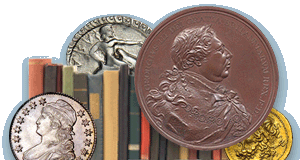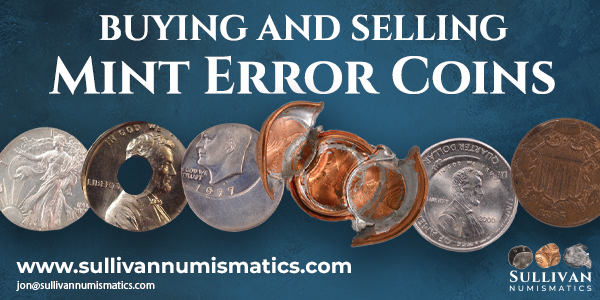
PREV ARTICLE
NEXT ARTICLE
FULL ISSUE
PREV FULL ISSUE
FAIRMONT HOARD: AN APPRECIATIONLongtime E-Sylum friend and supporter Doug Winter published a great article for Greysheet on the astounding Fairmont Hoard auctioned by Stack's Bowers. While we don't typically discuss marketing, grading and pricing, the hoard is now part of numismatic history, and Doug's article provides a useful perspective. Here's an excerpt - see the complete article online. -Editor In case you've spent the last five-plus years in Numismatic Siberia, you've no doubt heard of this accumulation of coins. It's huge. Likely well into the hundreds of thousands of coins. The value is likely in the area of $1,750,000,000 (this is figuring 500,000 coins at an average value of $3,500). The hoard contained half eagles, eagles and double eagles produced from 1834 through 1932. Coins from all mints were represented: Carson City, Charlotte, Dahlonega, Denver, New Orleans, Philadelphia, and San Francisco. It was marketed and sold by Stack's Bowers beginning around 2018 and extending to the present. It contained some six figure coins (with the individual high price achieved by a nice PCGS/CAC XF45 1870-CC double eagle at $815,000) but most were in the collector sweet spot of $2,500 to $10,000. Price records were broken by dozens of issues in all three denominations. I get it: not everyone liked the Fairmont look. If your experience with pre-1933 US gold is combing through eBay listings or going through boxes and boxes of doctored coins at shows, these coins with their deep, dark, dirty appearance looked funny. I've been an advocate of dirty gold for four-plus decades and I loved 75% of the coins from this source. The other 25%, not so much. I'm not alone. The success rate that these coins had at CAC was impressive, particularly on the No Motto half eagles and eagles. In many cases, over 50% of the coins in a specific category stickered. What's really critical to note is that many seemingly ho-hum coins (like a random XF45 S-Mint half eagle from the early 1870's) were essentially unknown with undoctored surfaces prior to the release of Fairmont into the market. Amongst the cognoscenti certain Fairmont coins now command sizable premiums above non-Fairmont coins based on their natural appearance. Assuming that the majority of the scarce to rare pre-1908 Fairmont coins have been sold, I believe that these coins will trade for even larger premiums a decade from now. A new collector of Liberty half eagles in 2035 will browse through the Stack's Bowers sales from 2022 and 2023 and wonder with amazement how nice the coins were and how reasonably they sold for. For some areas of the market, the appearance of multiple examples of specific dates was enough to kill it dead on the spot. For other areas, these additions to a starved market were welcome additions. Thin markets such as No Motto fives and tens from San Francisco couldn't handle the infusion of multiple Condition Census coins. Areas with a strong collector base such as Charlotte and Dahlonega half eagles not only welcomed the additional coins but thrived as a result. If you bought the really special coins in the sales (not the most expensive; just the specific issues which you never see nice) and you can hold them for a few full market cycles, you'll do fine financially. If you are a true collector of dated gold, you didn't buy these coins just to flip them in a year or two. Unless your collection is full of bad deals and dangerous dates (i.e., those which were prime candidates to be discovered in quantity in overseas hoards or in shipwrecks), I can't see a single reason why Fairmont did nothing but good things for the better date gold market. Among other things it did the following for me:
To read the complete article, see:
Wayne Homren, Editor The Numismatic Bibliomania Society is a non-profit organization promoting numismatic literature. See our web site at coinbooks.org. To submit items for publication in The E-Sylum, write to the Editor at this address: whomren@gmail.com To subscribe go to: Subscribe All Rights Reserved. NBS Home Page Contact the NBS webmaster 
|

